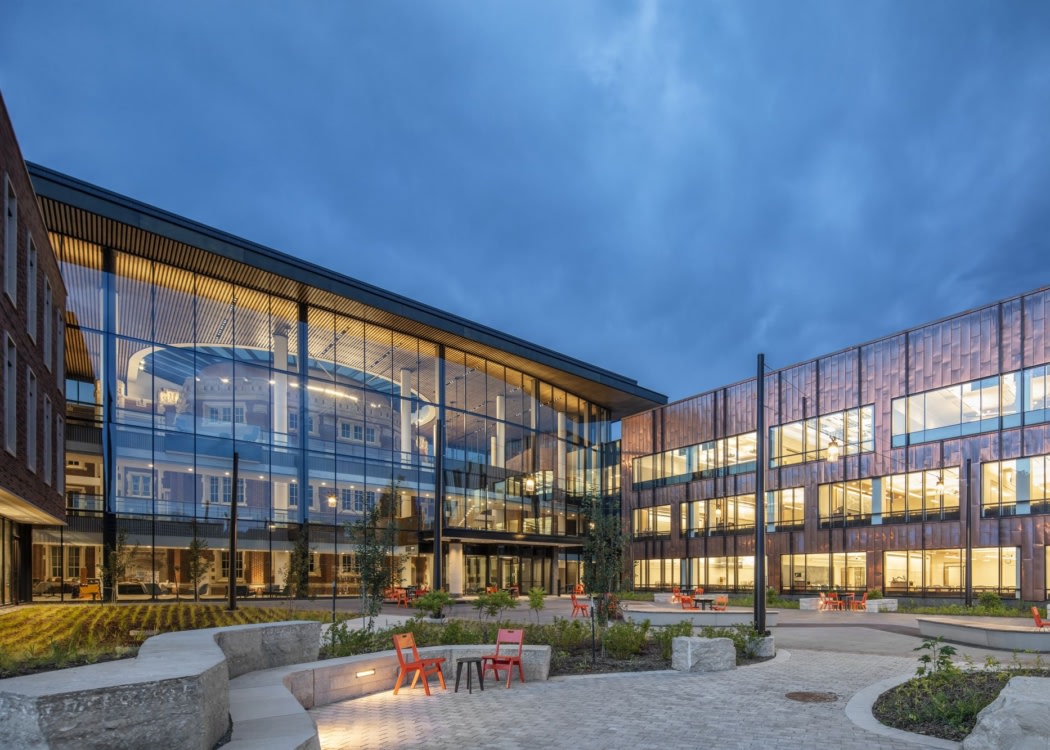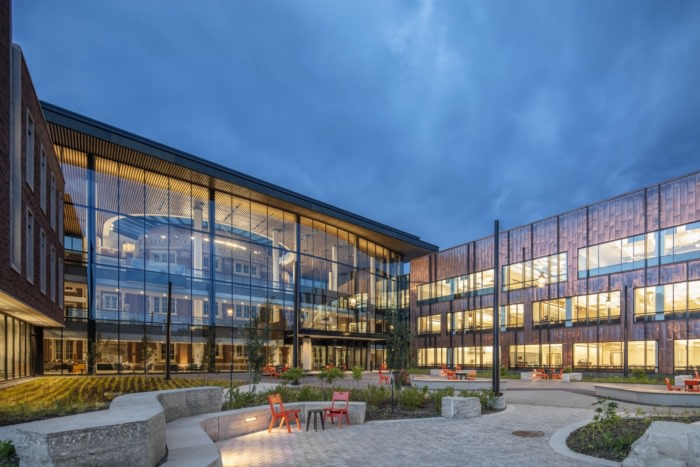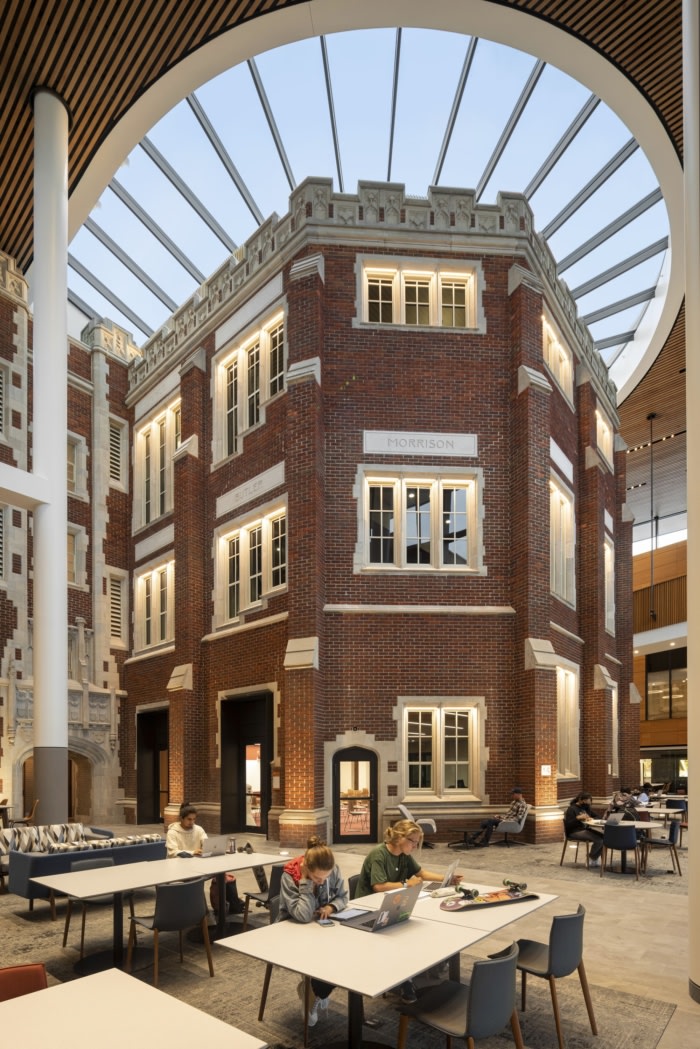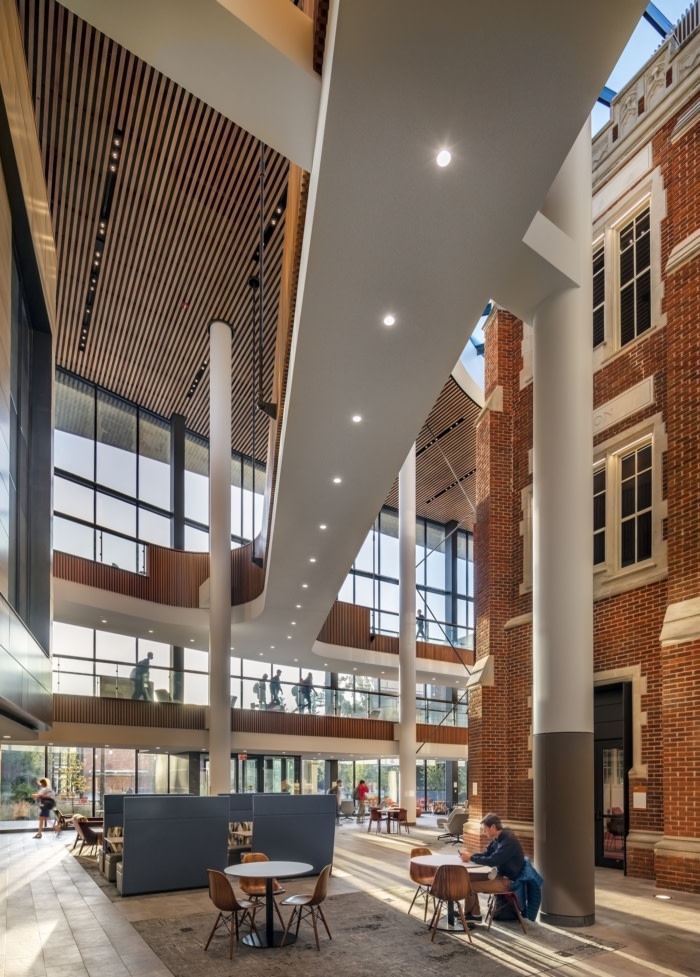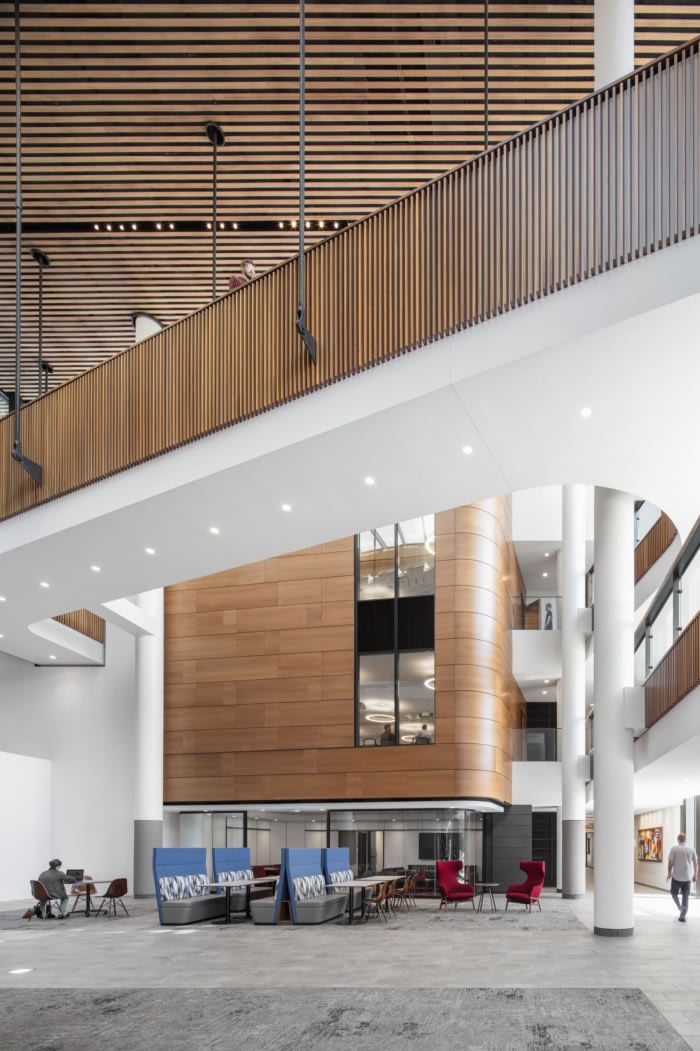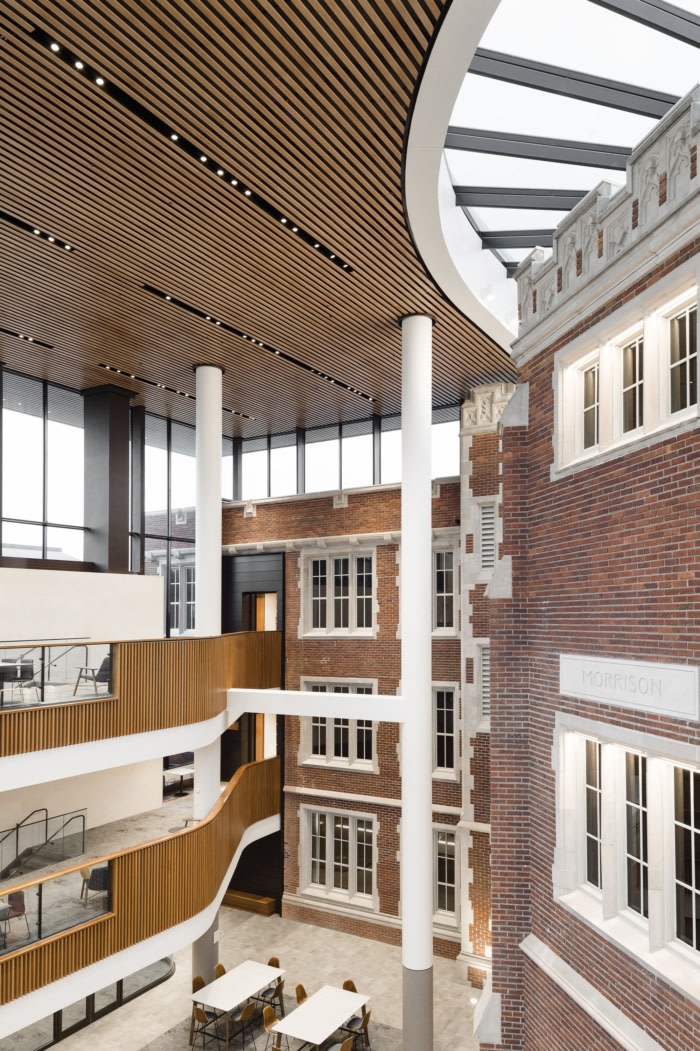Grinnell College – Humanities and Social Studies Center
Page designed the Humanities and Social Studies Center for Grinnell College with a thoughtful, inclusive approach in Grinnell, Iowa.
At Grinnell College’s Humanities and Social Studies Center (HSSC), economics coexists with political science, and classical languages are taught alongside history and sociology. The heart of all these disciplines is the intersection of four pavilions — two new and two renovated — joined by a three-story atrium with bridges connecting four classroom regions, 15 departments, and the greater Grinnell community. This new structure embraces Alumni Recitation Hall, creating a central, light-filled courtyard that looks toward the future of liberal arts education while respecting the heritage of one of Grinnell’s most treasured landmarks.
The HSSC truly embraces the possibilities of a 21st century learning experience. Students and professors begin the day by walking together along the atrium bridge, enjoying the morning light from the clerestory windows. Class convenes in the historic Alumni Recitation Hall, now fully integrated with modern technology. Students head to the learning laboratories for small group breakouts where they use online tools to work with peers at other institutions. Between classes, they meet up and head to semi-private breakout spaces for project work.
The idea that an individual action at the local level can have a profound effect on the global community is key to Grinnell’s mission. The design is inspired by the “edge effect” concept which occurs within ecotones, the transition zone between ecosystems that is exponentially more productive than either ecosystem on its own. Public spaces replicate these transition zones between departments to create intellectual collisions, influencing intentional and unintentional academic discourse. Forty classrooms allow for a wide range of layouts, technological integrations, and learning styles, providing for current teaching styles and flexible for future teaching styles.
To preserve the underground vegetated mass and to address the region’s flooding challenges, the facility includes bio-retention with drought-tolerant native plants. The College saw the prominent location of bio-retention as an educational opportunity, to teach students about conservation and the downstream effects of sustainable acts.
On the north elevations of the north and south pavilions, a brick mix inspired by Louis Sullivan’s Merchants National Bank (also in Grinnell, IA) achieves a modern feel through an ambassador size and angled brick between punched openings. On the south elevations, raw copper metal panels naturally patina over time. In the project climate, the copper turns darker, rather than greener, capturing the look of a penny worn from many years of circulation. Copper’s infinite lifecycle made it the perfect choice to compliment other building materials.
With inclusion in mind, Page partnered with the Institute for Human Centered Design to examine how the team’s approach could go beyond responding to ADA requirements and move toward designing for the broadest possible spectrum of users. The team carefully considered users’ flow through the building to enable equitable experiences, including vertical movement by providing more elevators and locating them close to the main staircases. The design offers sensitive approaches to controlling glare and acoustics and reimagines restrooms to create all-gender spaces.
The HSSC makes possible an inclusive teaching and learning experience attuned to emerging research, technology, and collaboration while honoring Grinnell’s tradition of excellence in education.
Design: Page
Photography: David Sundberg | Esto

